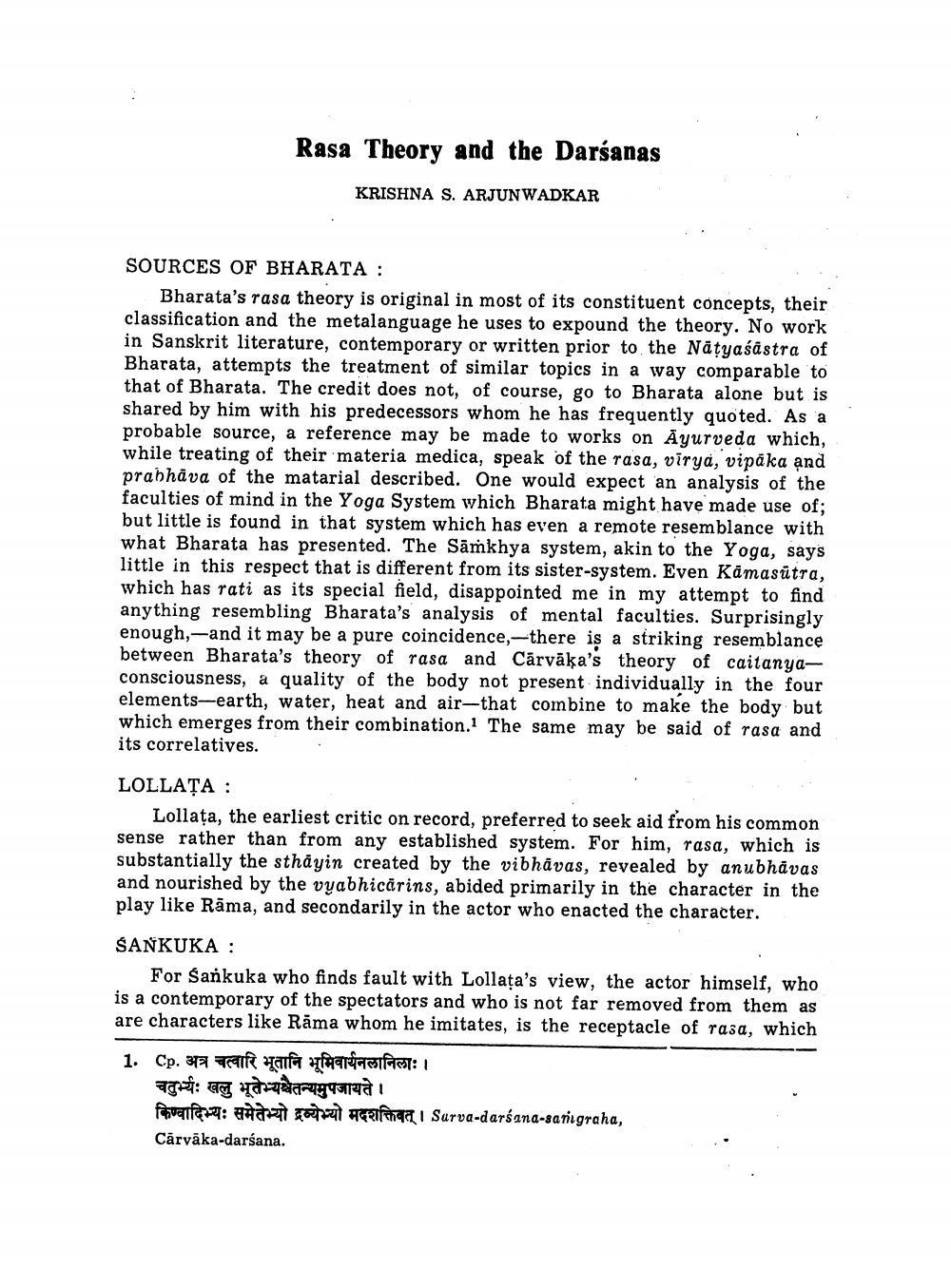________________
Rasa Theory and the Darśanas
KRISHNA S. ARJUNWADKAR
SOURCES OF BHARATA :
Bharata's rasa theory is original in most of its constituent concepts, their classification and the metalanguage he uses to expound the theory. No work in Sanskrit literature, contemporary or written prior to the Natyaśāstra of Bharata, attempts the treatment of similar topics in a way comparable to that of Bharata. The credit does not, of course, go to Bharata alone but is shared by him with his predecessors whom he has frequently quoted. As a probable source, a reference may be made to works on Ayurveda which, while treating of their materia medica, speak of the rasa, virya, vipaka and prabhāva of the matarial described. One would expect an analysis of the faculties of mind in the Yoga System which Bharata might have made use of; but little is found in that system which has even a remote resemblance with what Bharata has presented. The Sāṁkhya system, akin to the Yoga, says little in this respect that is different from its sister-system. Even Kamasutra, which has rati as its special field, disappointed me in my attempt to find anything resembling Bharata's analysis of mental faculties. Surprisingly enough, -and it may be a pure coincidence,-there is a striking resemblance between Bharata's theory of rasa and Cārvāka's theory of caitanyaconsciousness, a quality of the body not present individually in the four elements-earth, water, heat and air-that combine to make the body but which emerges from their combination. The same may be said of rasa and its correlatives.
LOLLAȚA :
Lollata, the earliest critic on record, preferred to seek aid from his common sense rather than from any established system. For him, rasa, which is substantially the sthåyin created by the vibhāvas, revealed by anubhāvas and nourished by the vyabhicărins, abided primarily in the character in the play like Rāma, and secondarily in the actor who enacted the character.
SANKUKA:
For Sankuka who finds fault with Lollata's view, the actor himself, who is a contemporary of the spectators and who is not far removed from them as are characters like Rāma whom he imitates, is the receptacle of rasa, which 1. Cp.37 Traif Harfa faarejasiftat:
चतुभ्यः खलु भूतेभ्यश्चैतन्यमुपजायते । fravalfer: a z
a Surva-darśana-sarigraha, Cārvāka-darśana.




